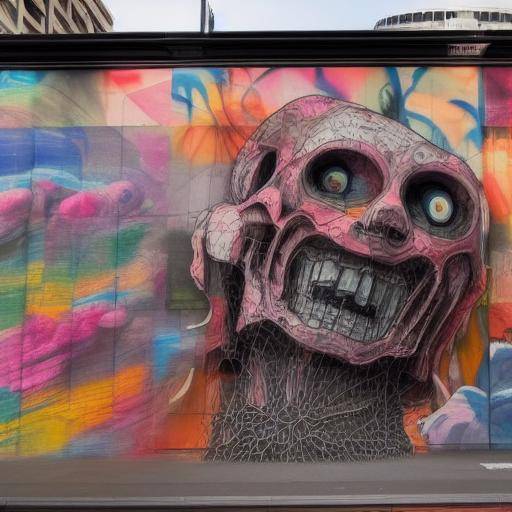
Introduction
Street art is a vibrant expression that transforms urban landscapes, challenging perceptions and connecting communities. In Melbourne, Australia, this art form has flourished, creating a network of districts that give life to the city with interactive graffiti, recycled sculptures and underground galleries. In this article, we will explore eight of the most emblematic districts that will surely transform your vision of urban art in Melbourne.
History and Background
Street art has its roots in the expression of identity and protest. In the 1960s, counterculture movements marked the emergence of graffiti in New York, making them symbols of urban expression. In Melbourne, street art took root in the 1980s, when local artists began to translate their creativity into the corners of the city.
Emblematic Districts
1. Hosier Lane
This iconic alley is known for its constantly changing murals and interactive graffiti that challenge conventional perceptions of art. Visitors can participate in the evolution of the works, creating a unique immersive experience.
2. Union Lane
Union Lane is recognized for its focus on recycled sculptures, where artists transform disposable materials into impressive works of art. This innovative approach not only promotes sustainability, but also raises awareness of environmental impact.
3. Blender Studios
In the heart of Melbourne is this epicenter of the underground expression, where emerging artists have the freedom to create and exhibit works that challenge the established norms. The underground galleries offer a platform for unconventional and provocative voices.
4. Fitzroy
Recognized as a creative centre, Fitzroy hosts a rich diversity of artistic expressions. From vibrant murals on the streets to collaborative art spaces, this district is a crucible of ideas and experimentation.
5. Collingwood
Collingwood shines through its large-scale murals that tell cultural and social stories. Local and global artists converge in this district to give life to works that transcend linguistic and cultural barriers.
6. Coburg
Coburg has embraced street art as a means of celebrating diversity and inclusion. The works in this district reflect Melbourne's rich multicultural tapestry, promoting intercultural understanding and community cohesion.
7. Brunswick
Brunswick captivates with its interactive graffiti that invites viewers to participate and co-create. This participatory approach redefines the dynamics between the artist and the public, democratizing art and fostering collaboration.
8. CBD: Urban Art Centre
Melbourne's heart is home to a diverse concentration of urban art, ranging from interventions in public spaces to ephemeral facilities that challenge the perception of the urban environment. CBD is a constantly changing canvas that arouses curiosity and reflection.
Detailed Analysis
Street art in Melbourne not only embellishes the city, but also promotes cultural tourism and promotes social dialogue. Interaction with the works invites an introspection and connection with the environment, encouraging appreciation of diversity and creativity.
Immersive and participatory experiences
Whether participating in the creation of interactive murals, exploring sculptures with recycled materials or entering underground galleries, street art districts in Melbourne offer immersive experiences that challenge traditional art conventions.
Practical Tips to Enjoy Urban Art
When exploring these districts, it is advisable to take a camera with you to capture the emotions and details of the works. It is also important to be open to the individual interpretation of art, as each work can evoke unique emotions and thoughts. In addition, respecting the environment and private property is essential to fully enjoy these cultural expressions.
Conclusion
The wealth and diversity of street art districts in Melbourne offer an incomparable experience that will transform your vision of urban art. From Hosier Lane to the heart of the CBD, every corner of the city breathes creativity, innovation and passion for street art. Discover how these expressions transform urban landscapes and awaken conversations in this vibrant city.
Frequently asked questions
What's the story behind street art in Melbourne?
Street art in Melbourne has its roots in the expression of identity and protest. In the 1980s, local artists began to translate their creativity into the corners of the city, marking the beginning of a solid culture of urban art.
What makes interactive graffiti so special?
Interactive graffiti allows a participatory experience, where visitors can become involved in the evolution of the works, generating a unique connection with urban art.
How do sculptures recycled to sustainability contribute?
Recycled sculptures in Melbourne promote environmental awareness by transforming disposable materials into impressive works of art, fostering sustainability and sustainable art.
What makes underground galleries so attractive?
The underground galleries offer a platform for emerging artists and non-conventional voices, challenging established norms and promoting artistic experimentation.
How can I fully appreciate street art in Melbourne?
To fully enjoy street art in Melbourne, it is recommended to explore the different districts with an open mind, respecting the environment and private property, and participating in the immersive experiences they offer.
What is the importance of street art in Melbourne's cultural scene?
Street art in Melbourne plays a crucial role in the cultural scene, promoting social dialogue, promoting appreciation of diversity and creativity, and enriching urban experience for residents and visitors alike.
With these street art districts in Melbourne, your vision of urban art will be transformed, leaving you with a deeper appreciation of creativity and human expression in a vibrant urban environment.
